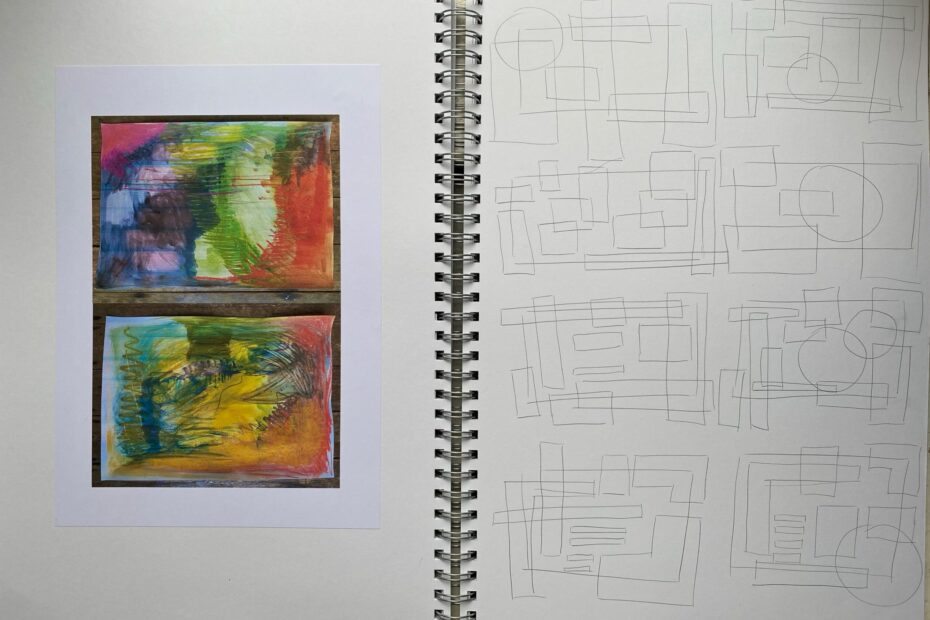Before I took the plunge and started my garden design training, I was worried about two things: would I be any good at technical drawing and would I be a complete disaster at taking measurements? I need not have worried because, despite finding these two aspects the most challenging part of my training, they are so fundamental to the process that I have just had to grit my teeth and get on with it… and it turns out I am good enough! The site visit measurements were taken as a team and then at home we individually turned them into an accurate survey… a bit of a chore, but then the real fun can start. Shape work. Those two words that I would not previously have put together have become, possibly the most fascinating aspect of my garden design adventure.

My current project has seen me taking inspiration from my friend, the artist Miranda Carter and her work. Specifically her recent work, which is directly influenced by open water swimming and the rhythms of nature that she finds herself immersed in when she is out in the lake or the sea. I have tried to capture her relaxed, semi abstract techniques and then I have examined them more closely to identify shapes, colours and textures. Looking and experimenting with shapes that relate to an idea that you have had for a specific garden can help free you up to create abstract art that you find pleasing. It is not a garden design at this point, but it is enormous fun!

Fellow students on the garden design course at The Cotswold Gardening School struggled with this concept initially. The idea of forgetting about the garden design aspect was hard to fathom for some. My art background, specifically the remarkably liberating and experimental year I spent doing an art foundation diploma at the age of 18 meant that I was willing to embrace this experiment fully and I have felt comfortable with it from the start. That doesn’t mean to say that I have found it easy, though. Maybe I’m just not afraid to try out lots of ideas and discard the majority of them. It is because I know that if I try hard enough, I will have an idea that will stand out as the one that I can take forward.

When I have decided that some shapes inspired by my original ‘big idea’ ~ https://nicolahope.com/2022/04/the-cotswold-gardening-school-fizzy-feelings-and-big-ideas.html/ ~ have combined pleasingly, I can then place them on top of the site survey to see if they will work as an initial rough design. The shape work above will hopefully become a comprehensive garden design in time. I now need to take this 2D set of shapes and start thinking about them as a 3D garden. I need to think about differences in ground levels, about what the client wants to achieve with their garden and the features they want to include. I must also analyse the site and existing features and work out what it needs in order to be functional, comfortable, dynamic and, precisely what the client requires in a garden.

There is a great deal more work going into these initial stages alongside the shape work and that is why we keep a sketchbook with us at all times. I adore sketchbooks and have done all of my life. The moment I found out just how much we were going to be using sketchbooks during the garden design diploma at The Cotswold Gardening School was the moment I decided once and for all that I was going to go for it. I will be explaining more about how we use sketchbooks in the garden design process in my next blog. Hopefully by then my latest shapes and scribbles will be a professional standard garden design. I am certainly much less worried about measurements and technical drawing because I have tackled them head on. It also makes those activities that I do find easier much more pleasurable in comparison.






